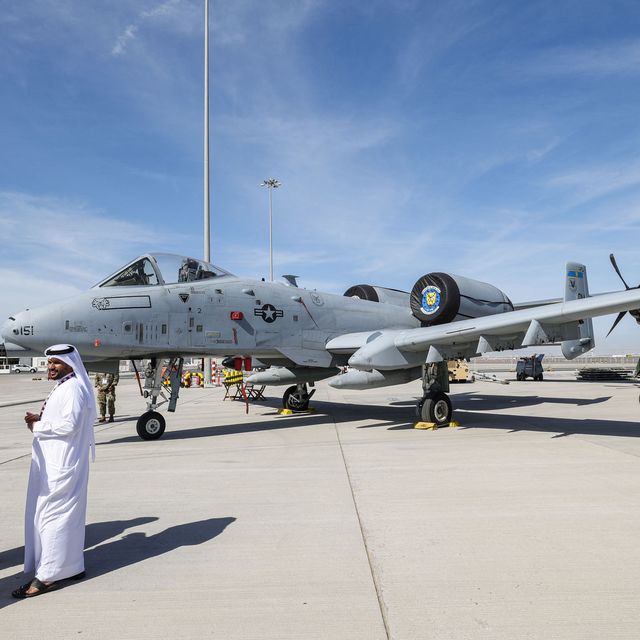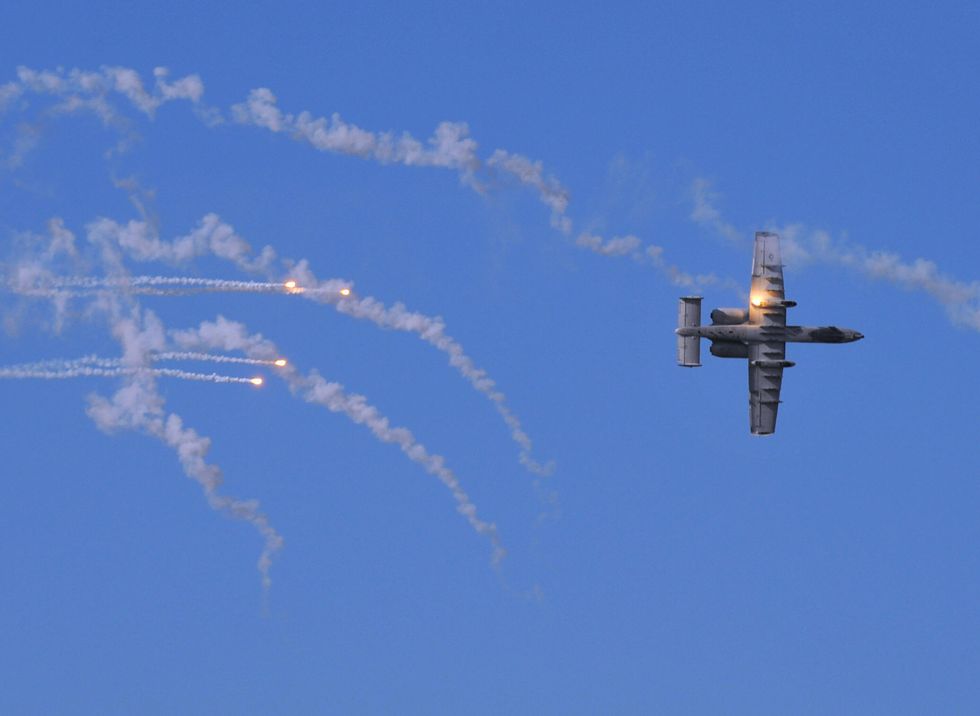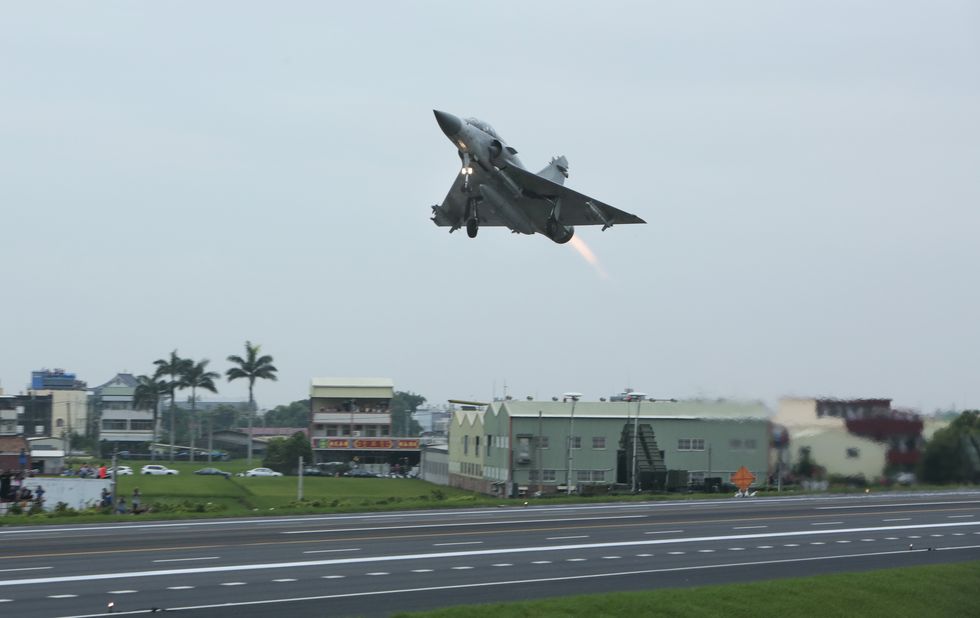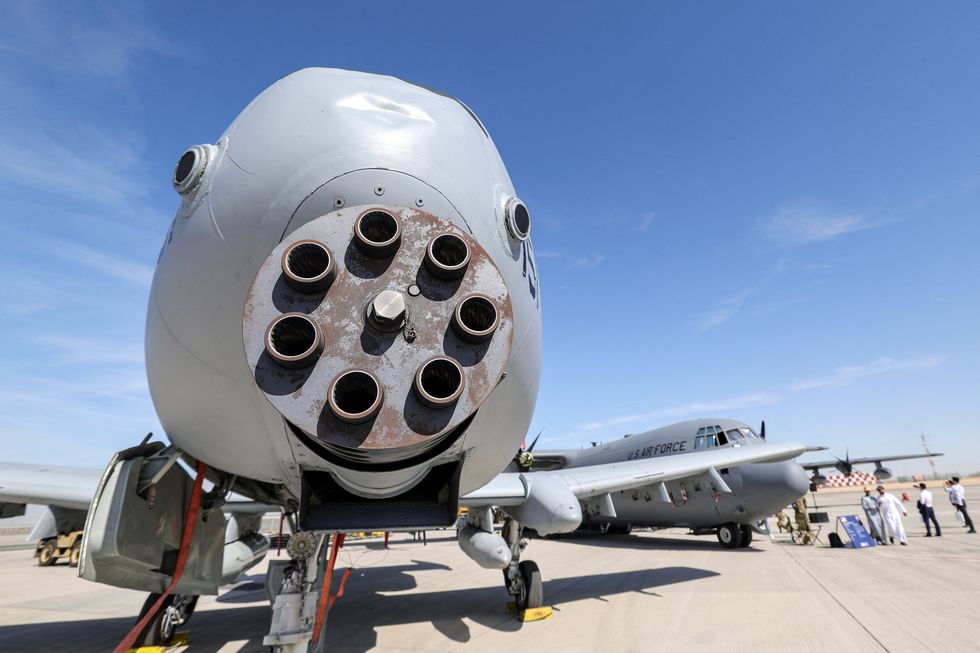- The U.S. Air Force says that at least one country is interested in buying used A-10 Warthogs.
- The service is in the midst of retiring its entire fleet, with the goal of having them all retired by 2029.
- The “one country” is not Ukraine, whose supporters have claimed it would benefit from the slow-flying ground attack jet.
The Secretary of the Air Force has hinted there is at least one country interested in buying surplus A-10 jets. In testimony at Capitol Hill, Frank Kendall stated that “one country at least has expressed some interest,” but did not disclose which one. Kendall went on to explain that whoever bought used Warthogs would find it difficult to keep the aging aircraft flying.
It’s Not Ukraine
The revered jet earned the nickname “Warthog” for its ugly appearance, and is famous for the sound of its 30mm GAU-8/A Avenger nose-mounted Gatling gun in action, a throaty, deep brrrrrrrrt! sound. The plane’s popularity with ground forces, veterans, the public, and Congress have kept it around far longer than originally intended.
The Air Force has been trying to get rid of the A-10, officially known as the Thunderbolt II, for more than three decades. Although the jet—designed to attack enemy tank columns in a World War III scenario—performed well in the 1991 Persian Gulf War, the service has long wanted to consolidate its aircraft inventory and A-10 Warthogs with fighter bombers. This has dragged on for so long the proposed replacement has gone from the F-16 Fighting Falcon to the F-35 Lightning II.
Time has officially run out, and the Air Force is retiring the A-10 at the rate of about 40-50 aircraft a year, with the goal of having the revered jet completely gone by 2029. But advocates have insisted that other countries may want to pick up where the Air Force left off. One obvious candidate is Ukraine, which is holding out against a brutal, mechanized onslaught that (at first glance) is a good fit for the tank-killing jet.
The problem is that air defenses—as made clear in Ukraine—have become so deadly that the future of a manned aircraft flying low over the battlefield is cloudy at best. Ukraine is facing the kind of threats that the Air Force considers theoretical on a daily basis. Secretary Kendall, appearing in front of a House Armed Services committee meeting, told lawmakers that Ukraine “has not expressed much interest.”
If Not Ukraine, Who?
So, if it’s not Ukraine, who is the interested party? Let’s run down the list of suspects.
Poland
Poland borders Ukraine, and has been repeatedly invaded and occupied by Russia over the past several centuries. Russia has repeatedly threatened Poland, and Russian President Vladimir Putin has challenged the legitimacy of the Polish state… the same thing he did to Ukraine before he invaded. As a result, Poland is engaged in the largest arms buildup in Europe. The country is buying M1A2SEPv3 Abrams main battle tanks, M142 HIMARS rocket trucks, F-35s, Patriot air defense missiles, Apache helicopters, and other American equipment. Could that also include A-10s?
South Korea
South Korea faces a heavily armed (though impoverished) opponent in the form of neighboring North Korea. North Korea has tanks and armored vehicles, but it’s uncertain how many of them are actually useful, and whether or not the country could supply them with fuel. A-10s could work well in the mountainous border terrain, flashing up and down valleys and attacking North Korean mechanized forces before safely disappearing behind nearby ridges. The U.S. Air Force operates one squadron of A-10s in South Korea, the 25th Fighter Squadron at Osan Air Base, and Seoul may want to retain that capability after 2029.
Taiwan
Taiwan is under threat of Chinese invasion—an event that would see amphibious transports streaming towards the island, helicopters packed with air assault troops flying in formation across the Taiwan Strait, and heavy transports laden with paratroopers targeting air bases and airports. Any one of these three modes of invasion transport would have a bad day running into an Air Force A-10. Taiwan has the facilities to protect the A-10s from missile barrages at the start of the invasion (including a mountain with an air base inside) and trains to use local highways to launch and recover fighter jets.
Egypt
Egypt has a long history of using American military equipment (including M1A1 tanks) and building up its military power to keep the armed forces happy. It also considers itself a leader of the Arab world, with a correspondingly powerful military. At the junction between Asia and Africa, Egypt borders two states wracked by violence: Libya and Sudan. A-10s could help it patrol long borders with both countries, which are largely dry, inhospitable desert.
Vietnam
Vietnam shares an 800 mile long border with China, and fought a short, sharp, brutal war with its northern neighbor in 1979. It also disputes China’s power play in the South China Sea, where China has claimed 90 percent of the sea at the expense of its neighbors’ competing territorial claims. Vietnam maintains a relatively large but underfunded military, and is used to doing more with less, so obsolete jets like the A-10 are not out of question. The A-10 could be used in another land war for attacking Chinese armored columns, or in the South China Sea as an armed patrol aircraft capable of sinking ships.
Forty years ago, there would have been a line of countries out the door wanting to buy the A-10 Warthog. Even China, in the 1970s, evaluated it as part of its discarded “People’s War” defense doctrine. Today, despite the plane’s obsolescence against modern missiles, at least one country still wants to fly them.

Kyle Mizokami is a writer on defense and security issues and has been at Popular Mechanics since 2015. If it involves explosions or projectiles, he's generally in favor of it. Kyle’s articles have appeared at The Daily Beast, U.S. Naval Institute News, The Diplomat, Foreign Policy, Combat Aircraft Monthly, VICE News, and others. He lives in San Francisco.


















